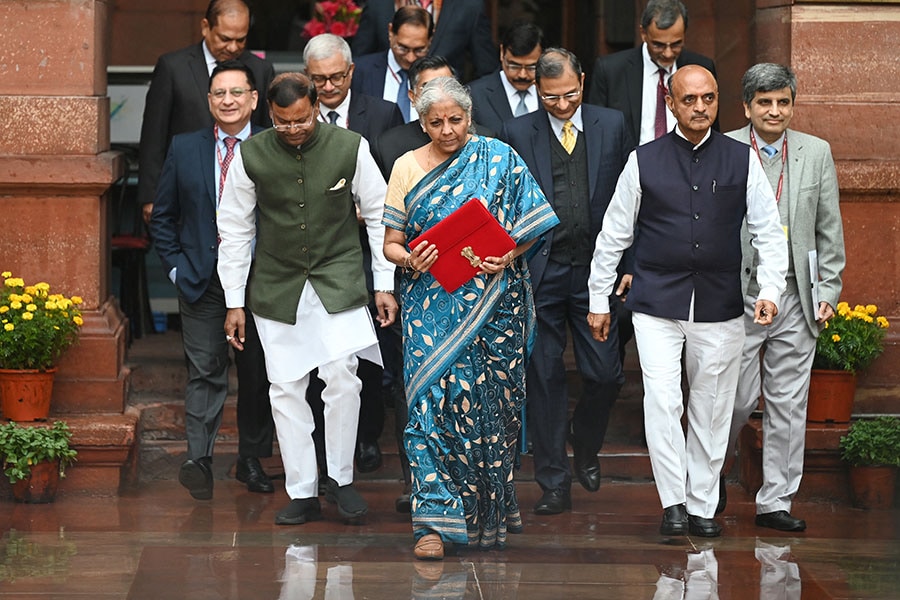
Budget 2024: The only surprise, no surprise
In an election year the Finance Minister presented a pragmatic Budget with no giveaways
 India's Finance Minister Nirmala Sitharaman (C) holds the briefcase containing the annual budget documents as she leaves the Finance ministry with her staff to present the budget in the parliament in New Delhi on February 1, 2024.
Image: Sajjad Hussain / AFP
India's Finance Minister Nirmala Sitharaman (C) holds the briefcase containing the annual budget documents as she leaves the Finance ministry with her staff to present the budget in the parliament in New Delhi on February 1, 2024.
Image: Sajjad Hussain / AFP
Those looking for tax sops, cash giveaways and loan waivers in the interim Budget were in for a disappointment. There were none of those.
In plentiful supply were fiscal rectitude, slightly lower spending and a continued build out of the country’s infrastructure. These markers of the Budget pointed to a government that was as confident of its management of the economy as it is of coming back for another full term.
In a short 58-minute speech the part that is likely to cheer the markets in the weeks ahead came at the very end. In keeping with its earlier commitment the government plans to stick to its target of getting to a 4.5 percent fiscal deficit by 2025-26. This is significant given the rise in deficit financing during the Covid period. For FY24 the revised deficit number is 5.8 percent and FY25 at 5.1 percent. This immediately cheered the bond markets with bond yields falling to 7.08 percent.
With the inclusion of Indian bonds in global bond indices later this year keeping the currency stable was a likely key aim of the Budget. This would ensure a healthy appetite for government bonds in the years to come. (There were also extensions on the tax status of the GIFT City that would expire in March 2024. This had been a key demand of global investors looking to set up there.)
With government borrowings in check there’s likely to be less money to spend on for schemes like PM Kisan. As a result, there was no increase in the amount to be paid to farmers from the current Rs 6000 a year.








